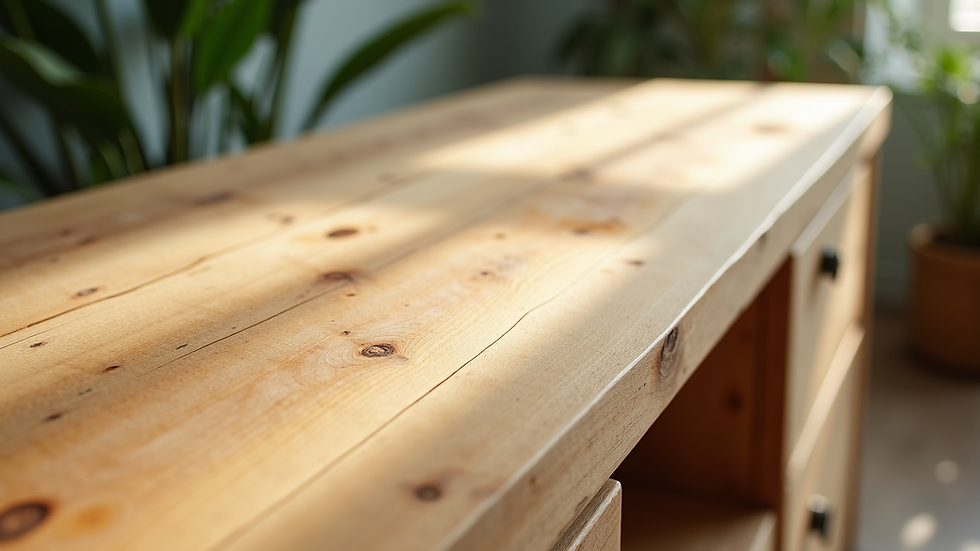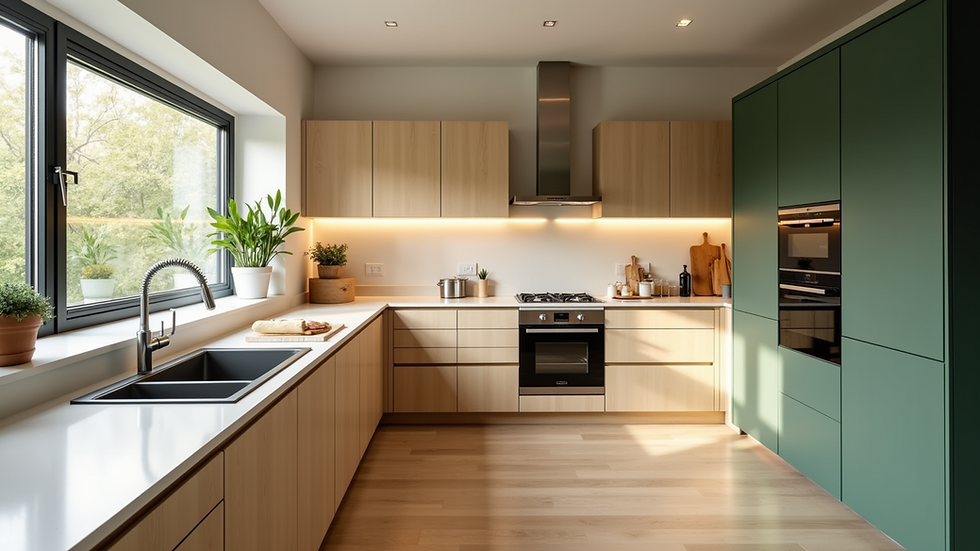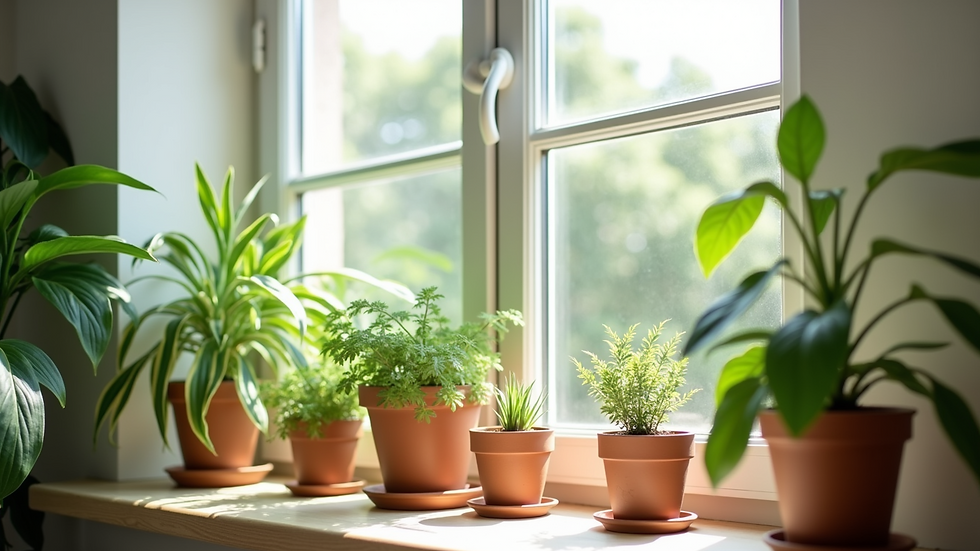Inspiring Ideas for Top Sustainable Interior Design
- Erin Carvalho
- Sep 19
- 5 min read
Creating a home that feels good and does good is more important than ever. I’ve noticed a growing passion for interiors that not only look beautiful but also respect our planet. Sustainable interior design is no longer a niche idea; it’s becoming a lifestyle choice. If you want to refresh your space with a conscience, you’re in the right place. Let’s explore some of the top trends in modern eco-friendly design that can transform your home into a healthier, greener haven.
Embracing Natural Materials in Modern Eco-Friendly Design
One of the most powerful ways to bring sustainability into your home is by choosing natural materials. These materials are renewable, biodegradable, and often require less energy to produce. Think wood, bamboo, cork, and natural stone. They add warmth and texture while reducing your environmental footprint.
For example, bamboo flooring is a fantastic alternative to traditional hardwood. It grows quickly and is incredibly durable. Cork is another excellent choice, especially for flooring and wall coverings. It’s harvested from the bark of cork oak trees without harming the tree itself, making it a renewable resource.
When selecting furniture, look for pieces made from reclaimed wood or sustainably sourced timber. These options not only reduce waste but also add character and history to your space. Plus, natural fabrics like organic cotton, linen, and wool are perfect for upholstery and curtains. They are breathable, long-lasting, and free from harmful chemicals.
Actionable tip: Next time you shop for furniture or decor, ask about the origin of the materials. Prioritize items with certifications like FSC (Forest Stewardship Council) or GOTS (Global Organic Textile Standard).

Energy-Efficient Lighting and Appliances for a Greener Home
Lighting and appliances are often overlooked when thinking about sustainability, but they play a huge role in reducing energy consumption. Modern eco-friendly design embraces LED lighting, smart controls, and energy-efficient appliances to cut down on electricity use.
LED bulbs use up to 80% less energy than traditional incandescent bulbs and last much longer. Pairing them with dimmers or motion sensors can further reduce waste. Smart lighting systems allow you to control brightness and timing from your phone, ensuring lights are only on when needed.
When it comes to appliances, look for Energy Star-rated products. These appliances meet strict energy efficiency guidelines and can save you money on utility bills. From refrigerators to washing machines, choosing energy-efficient models helps reduce your carbon footprint.
Actionable tip: Replace old bulbs with LEDs and consider installing smart switches. When upgrading appliances, check for energy ratings and prioritize those with the best efficiency.

Incorporating Biophilic Design Elements
Biophilic design is all about connecting indoor spaces with nature. It’s a trend that supports well-being by bringing natural light, plants, and organic shapes into your home. This approach not only improves air quality but also creates a calming atmosphere.
Large windows, skylights, and glass doors maximize natural light, reducing the need for artificial lighting during the day. Indoor plants are a simple and effective way to purify the air and add life to any room. Popular choices include snake plants, pothos, and peace lilies, which are low-maintenance and great for beginners.
Natural patterns and textures inspired by nature, such as leaf motifs or stone finishes, can be incorporated through wallpaper, rugs, or artwork. These subtle touches help create a soothing environment that feels connected to the outdoors.
Actionable tip: Start with a few easy-care plants and gradually add more greenery. Consider rearranging furniture to maximize sunlight exposure and explore natural decor accents.

Upcycling and Repurposing: Giving Old Items New Life
Sustainability is also about reducing waste. Upcycling and repurposing old furniture and decor is a creative way to refresh your space without buying new. This trend encourages you to see potential in items that might otherwise be discarded.
For instance, an old wooden ladder can become a stylish bookshelf or towel rack. Vintage suitcases can be stacked to create unique side tables. Even worn-out textiles can be transformed into cushion covers or wall hangings.
Upcycling not only saves resources but also adds a personal touch to your home. It’s a fun project that lets you express your creativity while supporting a circular economy.
Actionable tip: Before tossing something out, think about how it could be reused or updated. Check local thrift stores or online marketplaces for affordable, second-hand treasures.
Choosing Low-VOC Paints and Finishes for Healthier Spaces
Many traditional paints and finishes release volatile organic compounds (VOCs) that can harm indoor air quality. Choosing low-VOC or zero-VOC options is a simple way to make your home healthier and more eco-friendly.
These paints have fewer harmful chemicals and odors, making them safer for you and the environment. They come in a wide range of colors and finishes, so you don’t have to compromise on style.
In addition to paint, consider natural finishes like beeswax or plant-based oils for wood furniture. These alternatives are non-toxic and enhance the natural beauty of the material.
Actionable tip: When planning a paint project, look for products labeled low-VOC or zero-VOC. Ventilate the space well during and after application to minimize exposure.
Why Sustainable Interior Design Trends Matter
Adopting sustainable interior design trends is more than a passing fad. It’s a commitment to creating spaces that nurture our well-being and protect the planet. By choosing eco-friendly materials, energy-efficient solutions, and mindful decor, you contribute to a healthier home and a healthier world.
Every small change adds up. Whether it’s swapping out a light bulb, adding a plant, or repurposing an old chair, these choices reflect a deeper respect for nature and future generations.
I encourage you to explore these trends and find what resonates with your style and values. Sustainable design is accessible, rewarding, and endlessly inspiring.

Taking the First Step Toward a Greener Home
Starting your journey toward sustainable interior design doesn’t have to be overwhelming. Begin with one room or one element. Maybe it’s switching to energy-efficient lighting or introducing natural textiles. Small steps build momentum and confidence.
Remember, sustainability is a process, not a destination. It’s about making thoughtful choices that align with your lifestyle and priorities. Keep learning, experimenting, and sharing your experiences.
If you want more ideas and guidance, check out resources like DesignerinGreen. They offer practical tips and inspiration to help you create a home that’s both beautiful and kind to the earth.
Your home can be a sanctuary that supports your health and happiness while honoring the environment. Let’s make modern eco-friendly design the new standard for living well.
Thank you for joining me on this exploration of sustainable interior design. I hope you feel inspired to bring some of these ideas into your own space. Together, we can create homes that truly reflect care - for ourselves and the planet.




Comments